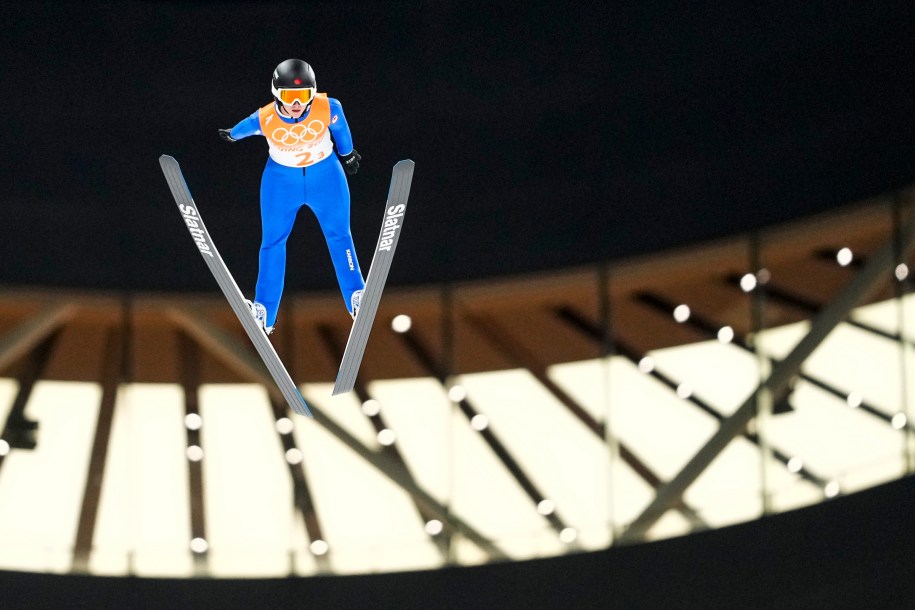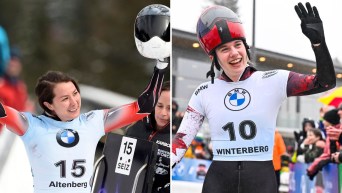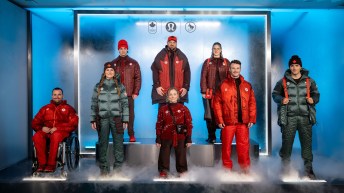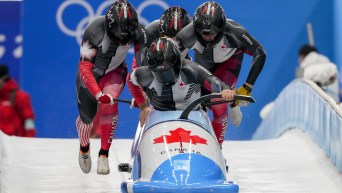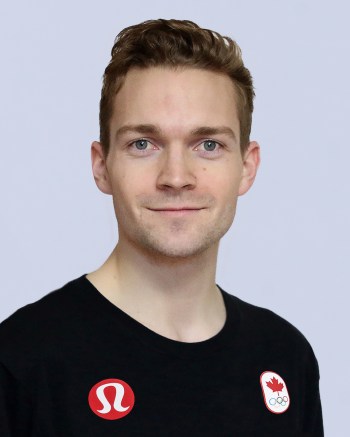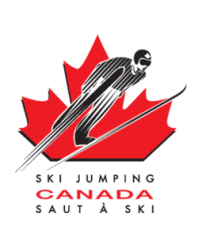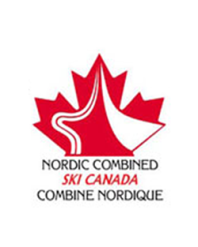Ski jumping 101 with Canada’s high flyers
If you’ve ever wondered how it feels to fly, it might be time to get into ski jumping.
The sport has a long Olympic history, dating back to Chamonix 1924. And to the untrained eye, it may seem pretty straightforward: zip down a curved ramp on skis and fly as far as possible.
But there’s much more to it than that—the preparation, the technique, the peril and, yes, the exhilaration of fulfilling that dream of flying for just a few moments.
So, with six ski jumping events being contested at Milano Cortina 2026, we’ve got four of Canada’s top ski jumpers on board to help you prepare for all the action.
Abigail Strate and Alexandria Loutitt won bronze in the inaugural mixed team event at Beijing 2022, while Nicole Maurer and Natalie Eilers are hoping to compete in their first Olympic Games.
READ: Ski jumpers Abigail Strate and Alexandria Loutitt are making their dreams take flight
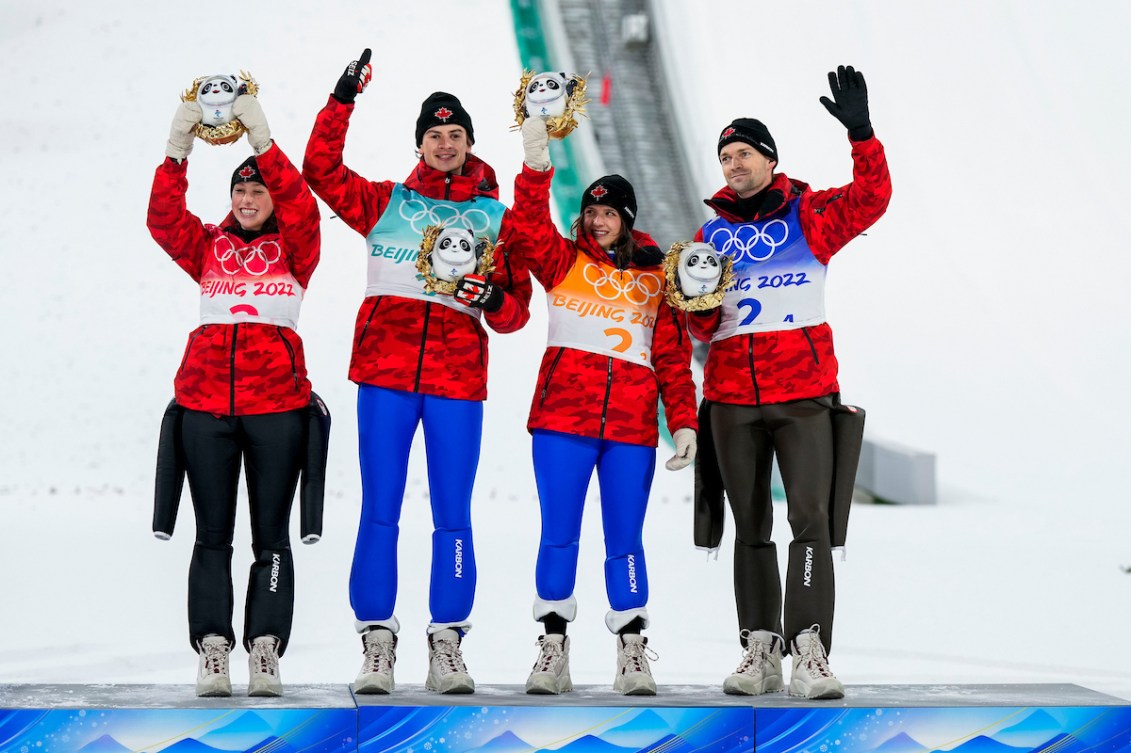
What’s the Olympic format for ski jumping?
While ski jumping has been part of every Olympic Winter Games since the first edition in 1924, the first women’s event was only added at Sochi 2014.
Milano Cortina 2026 will feature four of the same events as Beijing 2022: men’s individual normal hill, men’s individual large hill, women’s individual normal hill, and the mixed team event. A second women’s event has finally been added, the individual large hill, and the men’s team event will now be held in the super team format (two jumpers per team instead of the traditional four jumpers).
The ski jumping events will take place at the Predazzo Ski Jumping Stadium on Feb. 7, 9-10 and 14-16 (also known as Days 1, 3-4 and 8-10).
Wait, normal hill and large hill—what’s the difference?
Hills are categorized based on the farthest distance that skiers could safely jump. For normal hills, that’s up to 109m; for large hills, it’s up to 149m.
For their part, the Canadian women are excited to showcase their skills on the Olympic large hill for the very first time.
“The bigger, the better,” says Maurer, a 25-year-old from Calgary. “I do this sport because I want to jump far. So why wouldn’t I want to jump on a bigger hill?”
But it’s not simply about the distance travelled; the different hill sizes demand different skill sets and approaches.
“On the normal hill, you’re trying to use your power, use your legs and jump as strongly as you can,” says Strate, a 24-year-old also from Calgary. “And on the large hill, it’s more about the technique of the flying.”
On any hill, an athlete’s results don’t just come down to distance travelled. The jumper’s body position in the air and upon landing are also evaluated by judges, whose style points factor into a competitor’s final jump score.
While Strate is torn on whether she prefers a normal or large hill, she says it’s “really exciting” for female jumpers to have two individual Olympic events for the first time.
“I think it’s good for the athletes’ mindset,” she says. “You’re not going into the competition thinking, ‘well, literally this is it, this is [my] only chance.’”
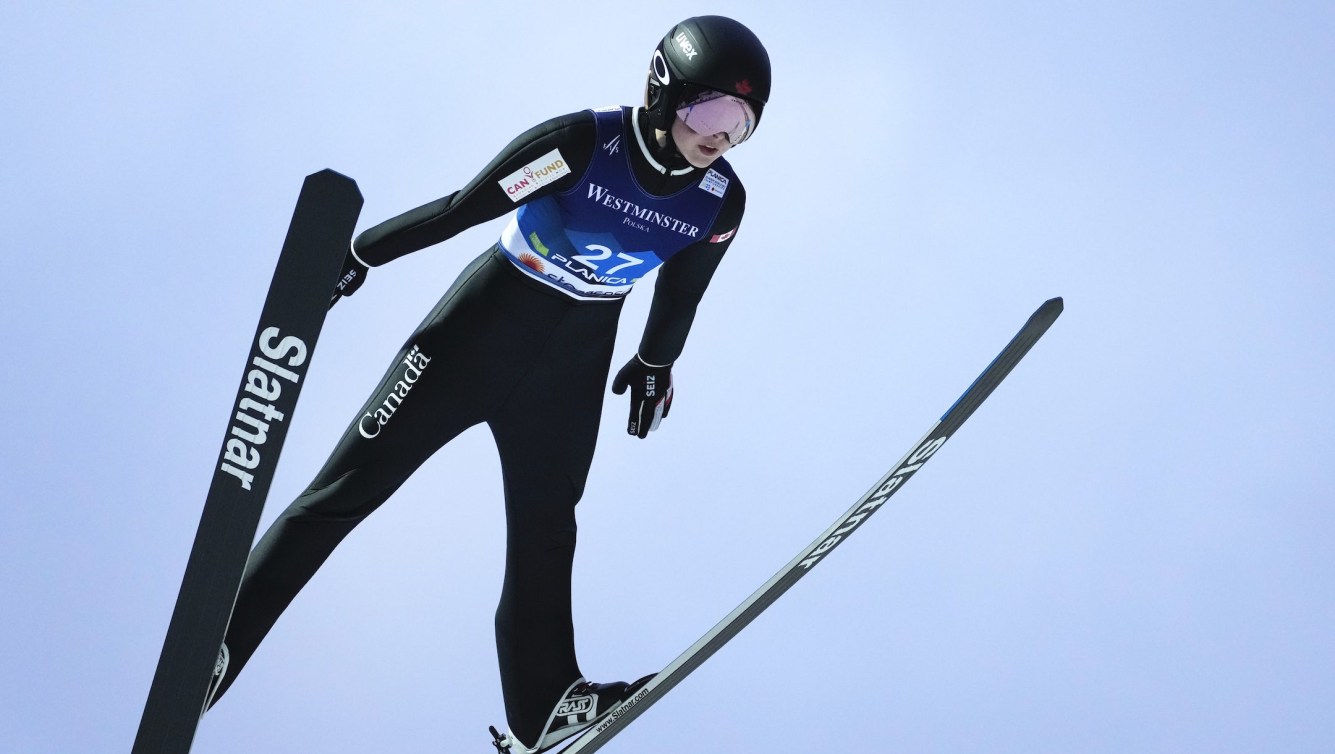
What’s it like preparing for a jump?
It starts with a chairlift or tram trip up to the warm-up hut inside the ski jump.
“We kind of wait there for 20 [minutes] to an hour,” says Loutitt, 21. “You can be up there for quite a while, so you kind of get cozy.”
Then it’s time for jumpers to put on their gear and go through equipment control. Officials check a jumper’s suit and scan a microchip inside it to confirm that athletes wear the same suit throughout the competition.
“Then after that, we will go and put our skis down on the step,” says Loutitt. “I have my little routine that I like to put my skis on one step below, and then I step up to the gate that we’re going to jump from.
“I take a really long time to put my bindings in. I like to take my sweet time.”
READ: Loutitt soars to Canada’s first ever World Cup win in women’s ski jumping
Then it’s time to sit on the gate and wait. Loutitt breathes and goes over the jump plan in her head, waiting for the light to turn green or yellow to indicate she can get on the gate and slide across on the bar.
“Once it turns green, you look to your coach to get the flag to go. And once you get the flag, you can jump,” she says. “Then you’re in the track and you get your, like, tuck position, we call it our in-run and you build speed and you get faster and faster and faster.
“Then you come through the curved hill and then you actually jump. And then after the jump, you kind of start trying to manipulate your flight and find the most effective position possible.
“You try and go as far as you can while trying to keep all the speed. And there’s lots of little bits and pieces you’re trying to keep together and ideas you’re trying to have in the air.
“When it comes to the end of your jump, you try and step with one foot in front of the other for a perfect Telemark landing.”
The Telemark landing helps jumpers maintain control and earn style points from the judges.
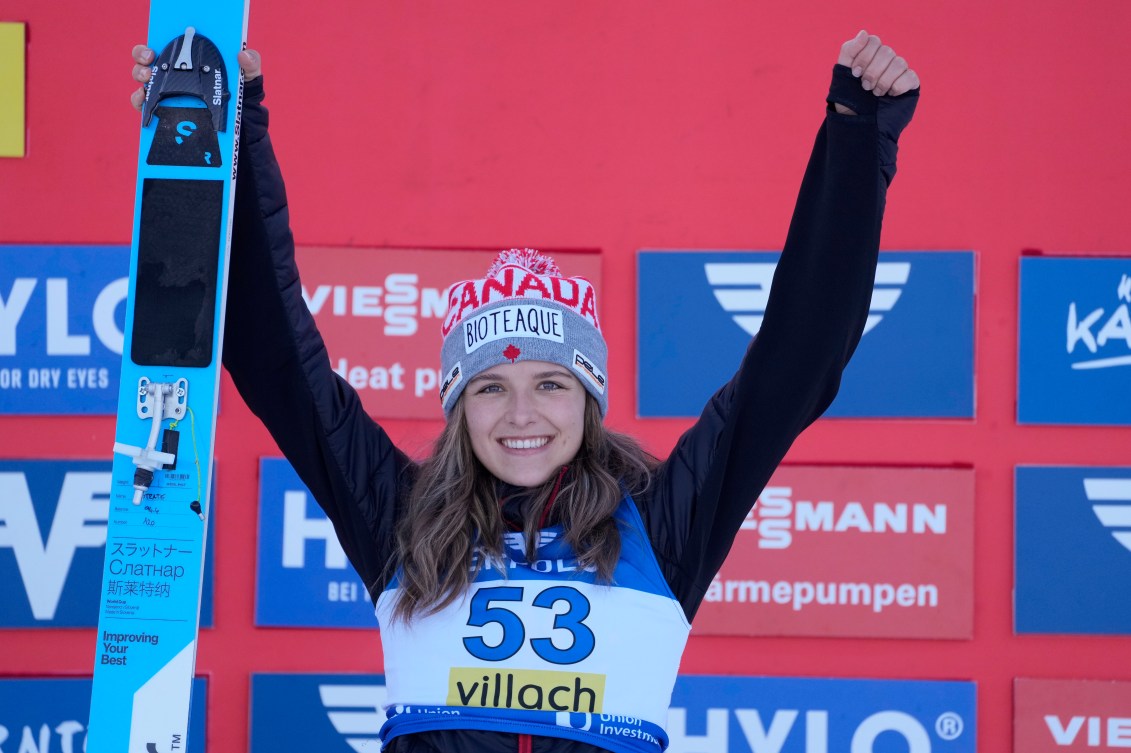
How does it feel to be in the air?
Despite all of the mental and physical checklists that go into a jump, the flight itself can be borderline transcendental.
“It feels like every weight that you carry in your life is irrelevant in that moment,” says Maurer. “You’re going off a hill at 95 kilometres an hour. It doesn’t really matter what’s going on in your personal life, because there’s an immediate thing that’s happening.
“It is, ironically, very grounding, because although you’re flying through the air, you feel very connected with what you’re doing and who you are as a person in that moment, and everything feels like it will be okay.”
Eilers agrees with her teammate about the one-of-a-kind feeling that ski jumpers experience.
“[There’s] the rush of coming down the hill, building up to the jump, and then the feeling of soaring actually building up and lift underneath your skis,” says Eilers, 26. “It’s like what you feel in an airplane, except for you’re doing it by yourself. It’s just you with your equipment. You’re in control of your flight.”

How is Team Canada preparing for the Olympics?
While most athletes form connections with their teammates, Canada’s ski jumpers have another factor adding to their camaraderie.
In order to access a wider variety of hills and resources, the team’s training base is in Slovenia, where the jumpers spend much of their year. And while being half a world away from friends and family poses its challenges, it has also solidified their bonds.
“We get to experience new things,” says Eilers. “It also strengthens our relationship as teammates, because we are experiencing this unique situation together, and so we have each other to lean on and to talk to.”
READ: Ski jumper Strate soars to four straight Summer Grand Prix podiums
That support network has been especially beneficial for Eilers, who suffered multiple injuries from a devastating crash during training in early 2024. After two surgeries to repair the damage, she’s feeling “really good and really excited” about pursuing her Olympic dream.
“[Staying positive during recovery] was really hard but there wasn’t any point that I thought ‘would it be worth stopping?’” says Eilers. “I kept my mindset in the right positive space, because there were lots of little wins along the way, and they’re still happening, and they’ll continue to happen throughout the season.”
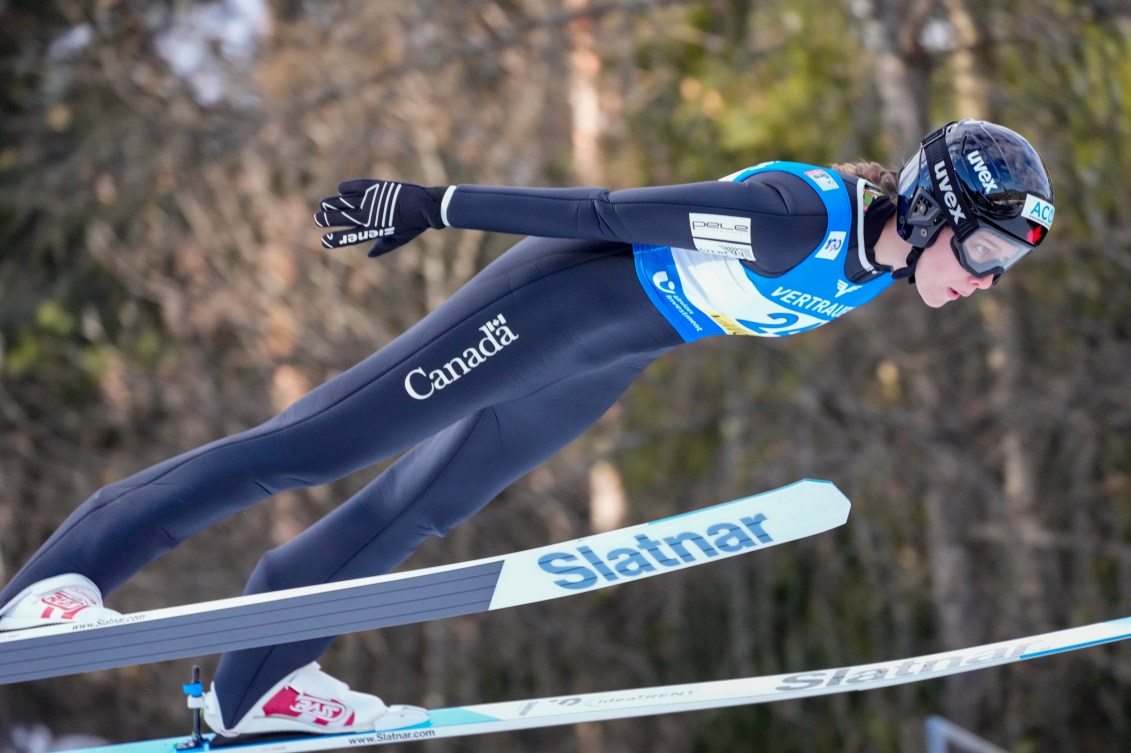
Eilers notes that the quartet, who all hail from Calgary, have come up together in the sport.
“Our team spirit is really high,” she says. “We all really appreciate having each other around, and we build off of each other.
“The vibe on the team is really one of a team, and it’s sort of a family.”
Now it’s Loutitt’s turn to lean on her teammates for support through the recovery process. She suffered a knee injury of her own in September and has been ruled out of competing at Milano Cortina 2026.
“I am heartbroken that this injury will prevent me from representing Canada at the upcoming Olympic Winter Games,” Loutitt said in a release. “I feel like I’m letting down my family, friends, and teammates.
“I know that I am still young, and I am grateful for everything I’ve already achieved in ski jumping. This is a setback in my journey, but it’s not the end.”
When will we know who’s going to the Olympics?
The International Ski and Snowboard Federation (FIS) will publish its final Olympic Quota Allocation List on Jan. 19, 2026. Countries will be allocated spots at Milano Cortina 2026 based on FIS World Cup and Summer Grand Prix standings from July 1, 2024 to Jan. 18, 2026.
Heading into the 2025-26 World Cup season, Team Canada is on pace to be allocated three women’s spots and one men’s spot.

